We should first take into account that ancient India, which was centered around the Indus Valley years ago, and was already well developed before 3200 BCE, stretched from Afghanistan to the Indian Ocean and points farther east and north, the largest empire in the world at the time.
But its influence spread much farther than that. During its peak developments, it had organized cities, multistory brick buildings, vast irrigation networks, sewer systems, the most advanced metalwork in the world, and a maritime trade network that incorporated the use of compasses, planked ships, and trained navigators that reached parts of western Asia, Mesopotamia, Africa, and other ports far beyond their borders. (1) So they were certainly capable of ocean-going trips that could have reached even to the Americas.
[wp_ad_camp_1]
Prakash Charan Prasad explains in his book, Foreign Trade and Commerce in Ancient India (p. 131): “Big ships were built. They could carry anywhere upwards from 500 men on the high seas. The Yuktialpataru classifies ships according to their sizes and shapes. TheRajavalliya says that the ship in which King Sinhaba of Bengal (ca. sixth century BCE] sent Prince Vijaya, accommodated full 700 passengers, and the ship in which Vijaya’s Pandyan bride was brought over to Lanka carried 800 passengers on board. The ship in which the Buddha in the Supparaka Bodhisat incarnation made his voyages from Bharukachha (Broach) to the ‘sea of the seven gems’ [Sri Lanka], carried 700 merchants besides himself. The Samuddha Vanija Jakarta mentions a ship that accommodated one thousand carpenters.”
Marco Polo also related how, “An Indian ship could carry crews between 100 and 300. Out of regard for passenger convenience and comfort, the ships were well furnished and decorated in gold, silver, copper, and compounds of all these substances were generally used for ornamentation and decoration.” (2)
Because of the Vedic civilization’s great reach, Aurel Stein (1862-1943), a Hungarian researcher also related: “The vast extent of Indian cultural influences, from Central Asia in the North to tropical Indonesia in the South, and from the borderlands of Persia to China and Japan, has shown that ancient India was a radiating center of a civilization, which by its religious thought, its art and literature, was destined to leave its deep mark on the races wholly diverse and scattered over the greater part of Asia.” (3)
In this regard, Philip Rawson, in The Art of Southeast Asia (1993, p. 7), further praises India’s gift of its civilizing affect on all other cultures. “The culture of India has been one of the world’s most powerful civilizing forces. Countries of the Far East, including China, Korea, Japan, Tibet, and Mongolia owe much of what is best in their own cultures to the inspiration of ideas imported from India. The West, too, has its own debts… No conquest or invasion, nor forced conversion [was ever]imposed.” And this is the basis for the mystery of the widespread nature of the ancient Vedic empire, which in many ways still exists today. It was this subtle spiritual dimension that spread all over the world.
Advanced East Indian Sailing in the Early Vedic Texts
As Gunnar Thompson also explains, regarding the capability of Indian ships: “Extensive maritime trade between India and the islands of Indonesia is well documented and illustrated. A 1st century Hindu manuscript, the Periplus, mentions two-mates ships with dual rudders mounted on the sides in the fashion of ancient Mediterranean vessels. The ships are portrayed in 2nd century Indian murals. Chinese chronicles of the same era describe seven-masted Hindu vessels 160 feet in length carrying 700 passengers and 1000 metric tons of merchandise. Buddhist records of a 5th century pilgrimage from Ceylon to Java report vessels large enough to carry 200 passengers.” (4)
India’s ancient maritime history is referenced as far back as the early Vedic texts. This is taken from my book, Advancements of Ancient India’s Vedic Culture (pp. 143-45). As we look at other cultures, what is often left out is the advanced nature of the ancient Indian civilization. As we look over this information, it becomes clear that ancient India had the means for sailing over great expanses of water, and also had a thriving trade industry based on shipping.
The fact is that the ancient Vedic texts, such as the Rig Veda, Shatapatha Brahmana, and others refer to the undertaking of naval expeditions and travel to distant places by sea-routes that were well-known at the time. For example, the Rig Veda (1.25.7) talks of how Varuna has full knowledge of all the sea routes that were followed by ships. Then (2.48.3) we find wherein merchants would also send out ships for foreign trade. (5)
Another verse (1.56.2) speaks of merchants going everywhere and frequently to every part of the sea. Another verse (7.88.3-4) relates that there was a voyage by Vasistha and Varuna in a ship skillfully fitted for the trip. Then there is a verse (1.116.3) that tells of an expedition on which Tugra, the Rishi king, sent his son Bhujya against some of his enemies in the distant islands. However, Bhujya becomes ship wrecked by a storm, with all of his followers on the ocean, “Where there is no support, or rest for the foot or hand.” From this he is rescued by the twin Ashvins in their hundred oared galley. Similarly, the Atharva Veda mentions boats which are spacious, well constructed and comfortable.
We should keep in mind that the Rig Veda is said to go back to around 3000 BCE, which means the sailing capacity for the Vedic civilization of ancient India was well under way by that time.
An assortment of other books also referred to sea voyages of the ancient mariners. Of course, we know that the epics, such as the Ramayana and Mahabharata referred to ships and sea travel, but the Puranas also had stories of sea voyages, such as in the Matsya,Varaha, and Markandeya Puranas. Other works of Classical Sanskrit included them as well, such as Raghuvamsha, Ratnavali, Dashakumaracharita, Kathasaritsagara, Panchatantra, Rajatarangini, etc.
Actually, ships have been mentioned in numerous verses through the Vedic literature, such as in the Vedas, Brahmanas, Ramayana, Mahabharata, Puranas, and so on. For example, in the Ayodhya Kand of Valmiki’s Ramayana, you can find the description of such big ships that could hold hundreds of warriors: “Hundreds of oarsmen inspire five hundred ships carrying hundreds of ready warriors.” The conclusion is that ships have been in use since the Vedic age.
In the Ramayana, in the Kishkindha Kand, Sugriva gives directions to the Vanar leaders for going to the cities and mountains in the islands of the sea, mainly Yavadvipa (Java) and Suvarna Dvipa (Sumatra) in the quest to find Sita. The Ramayana also talks of how merchants traveled beyond the sea and would bring presents to the kings.
In the Mahabharata (Sabha Parva), Sahadeva is mentioned as going to several islands in the sea to defeat the kings. In the Karna Parva, the soldiers of the Kauravas are described as merchants, “whose ships have come to grief in the midst of the unfathomable deep.” And in the same Parva, a verse describes how the sons of Draupadi rescued their maternal uncles by supplying them with chariots, “As ship wrecked merchants are rescued by means of boats.” However, another verse therein relates how the Pandavas escaped from the destruction planned for them with the help of a ship that was secretly and especially constructed for the purpose under the orders of the kind hearted Vidura. The ship was large, and provided machinery and all kinds of weapons of war, and able to defy storms and waves.
Also, in Kautilya’s Arthashastra we find information of the complete arrangements of boats maintained by the navy and the state. It also contains information on the duties of the various personnel on a ship. For example, the Navadhyaksha is the superintendent of the ship, Niyamaka is the steerman, and Datragrahaka is the holder of the needle, or the compass. Differences in ships are also described regarding the location of the cabins and the purpose of the ship itself. (6)
In the Brihat Samhita by Varahamihir of the 5th century, and in the Sanskrit text Yukti Kalpataru by Narapati Raja Bhoj of the 11th century, you can find information about an assortment of ships, sizes, and materials with which they were built, and the process of manufacturing them. For example, one quote explains, “Ships made of timbers of different classes possess different properties. Ships built of inferior wood do not last long and rot quickly. Such ships are liable to split with a slight shock.” (7) It also gives further details on how to furnish a ship for accommodating the comfort of passengers, or for transporting goods, animals, or royal artifacts. The ships of three different sizes were the Sarvamandira, Madhyamarmandira, and the Agramandira.
The Shangam works of the South Indian Tamils have numerous references to the shipping activities that went on in that region, along with the ports, articles of trade, etc. Such texts included Shilappadikaram Manimekalai, Pattinappalai, Maduraikhanji, Ahananuru,Purananuru, etc. (8)
Ancient Indians traveled to various parts of the world not only for purposes of trade, but to also propagate their culture. This is how the Vedic influence spread around the world. For example, Kaundinya crossed the ocean and reached south-east Asia. From there, evidence shows that rock inscriptions in the Sun Temple at Jawayuko in the Yukatan province of Mexico mentions the arrival of the great sailor Vusulin in Shaka Samvat 854, or the year 932. In the excavations in Lothal in Gujarat, it seems that trade with countries like Egypt was carried out from that port around 2540 BCE. Then from 2350 BCE, small boats docked here, which necessitated the construction of the harbor for big ships, which was followed by the city that was built around it. (9)
In the period of 984-1042 CE, the Chola kings dispatched great naval expeditions which occupied parts of Burma, Malaya and Sumatra, while suppressing the piratical activities of the Sumatra warlords.
In 1292 CE, when Marco Polo came to India, he described Indian ships as “built of fir timber, having a sheath of boards laid over the planking in every part, caulked with iron nails. The bottoms were smeared with a preparation of quicklime and hemp, pounded together and mixed with oil from a certain tree which is a better material than pitch.” He further writes: “Ships had double boards which were joined together. They were made strong with iron nails and the crevices were filled with a special kind of gum. These ships were so huge that about 300 boatmen were needed to row them. About 3000-4000 gunny bags could be loaded in each ship. They had many small rooms for people to live in. These rooms had arrangements for all kinds of comfort. Then when the bottom or the base started to get spoiled, a new layer would be added on. Sometimes, a boat would have even six layers, one on top of another.”
A fourteenth century description of an Indian ship credits it with a carrying capacity of over 700 people giving a fair idea of both ship building skills and maritime ability of seamen who could successfully man such large vessels.
Another account of the early fifteenth century describes Indian ships as being built in compartments so that even if one part was shattered, the next remained intact, thus enabling the ship to complete her voyage. This was perhaps a forerunner of the modern day subdivision of ships into watertight compartments, a concept then totally alien to the Europeans.
Another traveler named Nicolo Conti came to India in the 15th century. He wrote: “The Indian ships are much bigger than our ships. Their bases are made of three boards in such a way that they can face formidable storms. Some ships are made in such a way that if one part becomes useless, the rest of the parts can do the work.”
Another visitor to India named Bertham writes: “The wooden boards are joined in such a way that not even a drop of water can go through it. Sometimes, the masts of cotton are placed in such a way that a lot of air can be filled in. The anchors were sometimes made of heavy stones. It would take a ship eight days to come from Iran to Cape Comorin (Kanyakumari).” (10)
The famous archeologist Padmashri Dr. Vishnu Shridhar Wakankar says, “I had gone to England for studies, I was told about Vasco da Gama’s diary available in a museum in which he has described how he came to India.” He writes that when his ship came near Zanzibar in Africa, he saw a ship three times bigger than the size of his ship. He took an African interpreter to meet the owner of that ship who was a Gujarati trader named Chandan who used to bring pine wood and teak from India along with spices and take back diamonds to the port of Cochin. When Vasco da Gama went to meet him, Chandan was sitting in ordinary attire, on a cot. When the trader asked Vasco where he was going, the latter said that he was going to visit India. At this, the trader said that he was going back to India the very next day and if he wanted, he could follow him. So, Vasco da Gama came to India following him. (11)
Sir William Jones, in The Journal of the Royal Asiatic Society–1901, relates how the Hindus, “must have been navigators in the age of Manu, because bottomry is mentioned in it. In the Ramayana, practice of bottomry is distinctly noticed.” Bottomry is the lending of insurance money for marine activities. (12)
In this way, Indians excelled in the art of ship-building, and even the English found Indian models of ships far superior of their own and worth copying. The Indian vessels united elegance and utility and fine workmanship. Sir John Malcom observed: “Indian vessels are so admirably adapted to the purpose for which they are required that, notwithstanding their superior stance, Europeans were unable during an intercourse with India for two centuries, to suggest or to bring into successful practice one improvement.” (13)
Mexican archeologist Rama Mena points out in his book, Mexican Archeology, that Mayan physical features are like those of India. He also mentions how Nahuatl, Zapotecan, and Mayan languages had Hindu-European affinities.
In this line of thinking, some American tribes have traditions of having ancestral homelands across the Pacific. A legend of Guatemala speaks of an ancient migration from across the Pacific to the city of Tulan. A tribe from Peru and Tucano of Columbia also relate in their traditions how ancestors sailed across the Pacific to South America. Tales of trade over the Pacific were also related to the earliest of Spanish explorers in Central America. (14)
Georgia anthropologist Joseph Mahan, author of The Secret (1983), has identified intriguing similarities between the Yueh-chic tribes of India-Pakistan and the Yuchi tribe of North America’s Eastern Woodlands. The Yuchi tradition also tells of a foreign homeland from across the sea–presumably in India. (15)
This information makes it clear that ancient India had the means to reach and in fact did sail to many parts of the world, including the ancient Americas, long before most countries. This is further corroborated by information in the chapter of Vedic culture in America inProof of Vedic Culture’s Global Existence, for those of you who would like more information on this.
Ancient India’s Maritime Trade
Further evidence shows that shipping from Bharatvarsha was a national enterprise and the country was a leader in world trade relations amongst such people as the Phoenicians, Jews, Assyrians, Greeks, and Romans in ancient times, and more recently with Egyptians, Romans, Turks, Portuguese, Dutch, and English.
The simple fact is that India’s maritime history predates the birth of Western civilization. The world’s first tidal dock is believed to have been built at Lothal around 2300 BCE during the Harappan civilization, near the present day Mangrol harbor on the Gujarat coast.
The earliest portrayal of an Indian ship is found on an Indus Valley seal from about 3000 BCE. The ship is shown being elevated at both bow and stern, with a cabin in the center. It is likely to have been a simple river boat since it is lacking a mast. Another drawing found at Mohendjodaro on a potsherd shows a boat with a single mast and two men sitting at the far end away from the mast. Another painting of the landing of Vijaya Simha in Ceylon (543 BCE) with many ships is found amongst the Ajanta caves.
That India had a vast maritime trade, even with Greece, is shown by the coins of the Trojans (98-117 CE) and Hadrians (117-138 CE) found on the eastern coast of India, near Pondicherry. This is evidence that Greek traders had to have visited and traded in the port cities of that area.
Kamlesh Kapur explains more about this in Portraits of a Nation: History of India: “Recent archeological excavations at Pattanam in Ernakulum district of Kerala by the Kerala council for Historical Research (KCHR) indicate that there was thriving naval trade around 500 B.C. According to the Director of KCHR, ‘The artifacts recovered from the excavation site suggest that Pattanam, with a hinterland port and a multicultural settlement, may have had links with the Mediterranean, the Red Sea, the Arabian Sea, and the South China Sea rims since the Early Historic Period of South India.’ KCHR has been getting charcoal samples examined through C-14 and other modern methods to determine the age of these relics. These artifacts were from the Iron Age layer. The archeologists also recovered some parts of a wooden canoe and bollards (stakes used to secure canoes and boats) from a waterlogged area at the site.
“The radiocarbon dating from Pattanam will aid in understanding the Iron Age chronology of Kerala. So far, testing done by C-14 method to determine the ages of the charcoal samples from the lowermost sand deposits in the trenches at Pattanam suggests that their calibrated dates range from 1300 B.C. to 200 B.C. and 2500 B.C. to 100 A.D. Thus there is strong evidence that Kerala had sea trade with several countries in Western Asia and Eastern Europe from the second millennia B.C. onwards.” (16)
The influence of the sea on Indian Kingdoms continued to grow with the passage of time. North-west India came under the influence of Alexander the great, who built a harbor at Patala where the Indus branches into two, just before entering the Arabian sea. His army returned to Mesopotamia in ships built in Sindh. Records show that in the period after his conquest, Chandragupta Maurya established an admiralty division under a Superintendent of ships as part of his war office, with a charter including responsibility for navigation on the seas, oceans, lakes and rivers. History records that Indian ships traded with countries as far as Java and Sumatra, and available evidence indicates that they were also trading with other countries in the Pacific, and Indian Ocean. Even before Alexander, there were references to India in Greek works and India had a flourishing trade with Rome. Roman writer Pliny speaks of Indian traders carrying away large quantity of gold from Rome, in payment for much sought exports such as precious stones, skins, clothes, spices, sandalwood, perfumes, herbs, and indigo.
The port cities included such places as Nagapattinam, Arikamedu (near Pondicherry), Udipi, Kollam, Tuticorin, Mamallapuram, Mangalore, Kannur, Thane, and others, which facilitated trade with many foreign areas, such as Indonesia, China, Arabia, Rome, and countries in Africa. Many other inland towns and cities contributed to this trade, such as Madurai, Thanjavur, Tiruchirapalli, Ellora, Melkote, Nasik, and so on, which became large centers of trade. Silk, cotton, sandalwood, woodwork, and various types of produce were the main items of trade.
Trades of this volume could not have been conducted over the countries without appropriate navigational skills. Two Indian astronomers of repute, Aryabhatta and Varahamihira, having accurately mapped the positions of celestial bodies, developed a method of computing a ship’s position from the stars. A crude forerunner of the modern magnetic compass called Matsyayantra was being used around the fourth or fifth century CE. Between the fifth and tenth centuries CE, the Vijayanagara and Kalinga kingdoms of southern and eastern India had established their rules over Malaya, Sumatra and Western Java. The Andaman and Nicobar Islands then served as an important midway for trade between the Indian peninsula and these kingdoms, as also with China. The daily revenue from the western regions in the period 844-848 CE was estimated to be 200 maunds (eight tons) of gold.
Not only was there trade from ancient times, going to many areas of the globe, but other countries may have also been going to India. It is reported that marine archaeologists have found a stone anchor in the Gulf of Khambhat with a design similar to the ones used by Chinese and Japanese ships in the 12th-14th century CE, giving the first offshore evidence indicating India’s trade relations with the two Asian countries. The stone anchor was found during an exploration headed by two marine archaeologists, A. S. Gaur and B. K. Bhatt, from the National Institute of Oceanography (NIO). “Though there are a lot of references and Chinese pottery (found from coastal sites) indicating trade relations between the two Asian nations (China and Japan) in the past, but this anchor from the offshore region is the first evidence from Indian waters. Similar type of anchors have been found from Chinese and Japanese waters,” stated Mr. Gaur. (17)
Furthermore, another recent finding that shows the ancient advancement of Indian maritime capabilities is the evidence that Indian traders may have gone to South America long before Columbus discovered America. Investigation of botanical remains from an ancient site, Tokwa at the confluence of Belan and Adwa rivers, Mirzapur District, Uttar Pradesh (UP), has brought to light the agriculture-based subsistence economy during the Neolithic culture (3rd-2nd millennium BCE). They subsisted on various cereals, supplemented by leguminous seeds. Evidence of oil-yielding crops has been documented by recovery of seeds of Linum usitatissimum and Brassica juncea. Fortuitously, an important find among the botanical remains is the seeds of South American custard apple, regarded to have been introduced by the Portuguese in the 16th century. The remains of custard apple as fruit coat and seeds have also been recorded from other sites in the Indian archaeological context, during the Kushana Period (CE 100-300) in Punjab and Early Iron Age (1300-700 BCE) in UP. The factual remains of custard apple, along with other stray finds, favor a group of specialists to support with diverse arguments the reasoning of Asian-American contacts way before the discovery of America by Columbus in 1498. (18)
The Indian Navy and Sea Power
In the south especially there was an established navy in many coastal areas. The long coastline with many ports for trade for sending out ships and receiving traders from foreign countries necessitated a navy to protect the ships and ports from enemies. According to records, the Pallavas, Cholas, Pandyas, and the Cheras had large naval fleets of ocean bound ships because these rulers also led expeditions against other places, such as Malayasia, Bali, and Ceylon.
The decline of Indian maritime power commenced in the thirteenth century, and Indian sea power had almost disappeared when the Portuguese arrived in India. They later imposed a system of license for trade, and set upon all Asian vessels not holding permits from them.
The piratical activities of the Portuguese were challenged by the Zamorins of Calicut when Vasco da Gama, after obtaining permission to trade, refused to pay the customs levy. Two major engagements were fought during this period. First, the battle of Cochin in 1503, clearly revealed the weakness of Indian navies and indicated to the Europeans an opportunity for building a naval empire. The second engagement off Diu in 1509 gave the Portuguese mastery over Indian seas and laid the foundation of European control over Indian waters for the next 400 years.
Indian maritime interests witnessed a remarkable resurgence in the late seventeenth century, when the Siddhis of Janjira allied with the Moghuls to become a major power on the West Coast. This led the Maratha King Shivaji to create his own fleet, which was commanded by able admirals like Sidhoji Gujar and Kanhoji Angre. The Maratha Fleet along with the legendary Kanhoji Angre held sway over the entire Konkan Coast keeping the English, Dutch and Portuguese at bay. The death of Angre in 1729 left a vacuum and resulted in the decline of Maratha sea power. Despite the eclipse of Indian kingdoms with the advent of western domination, Indian shipbuilders continued to hold their own well into the nineteenth century. The Bombay Dock completed in July 1735 is in use even today. Ships displacing 800 to 1000 tons were built of teak at Daman and were superior to their British counterparts both in design and durability. This so agitated British shipbuilders on the River Thames that they protested against the use of Indian built ships to carry trade from England. Consequently, active measures were adopted to cripple the Indian shipbuilding industries. Nevertheless, many Indian ships were inducted into the Royal Navy, such as HMS Hindostan in 1795, the frigate Cornwallis in 1800, HMS Camel in 1801, and HMS Ceylon in 1808. HMS Asia carried the flag of Admiral Codrington at the battle of Navarino in 1827, the last major sea battle to be fought entirely under sail.
Two Indian built ships witnessed history in the making. The Treaty of Nanking, ceding Hong Kong to the British, was signed onboard HMS Cornwallis in 1842. The “Star Spangled Banner” national anthem of the USA was composed by Francis Scott Key onboard HMS Minden when the ship was on a visit to Baltimore. Numerous other ships were also constructed, the most famous being HMS Trincomalee, which was launched on 19 October, 1817, carrying 86 guns and displacing 1065 tons. This ship was latter renamed Foudroyant.
The period of 4000 years between Lothal and Bombay Dock, therefore, offers tangible evidence of seafaring skills the nation possessed in the days of sail. In the early seventeenth century, when British naval ships came to India, they discovered the existence of considerable shipbuilding and repair skills, as well as seafaring people. An ideal combination was thus available for supporting a fighting force in India. (19)
How the British Killed the Marine Industry of India
When the westerners made contact with India, they were amazed to see their ships. Until the 17th century, European ships were a maximum of 600 tonnes. But in India, they saw such big ships as the Gogha, which was more than 1500 tonnes. The European companies started using these ships and opened many new factories to make Indian artisans manufacture ships. In 1811, Lt. Walker writes, “The ships in the British fleet had to be repaired every 12th year. But the Indian ships made of teak would function for more than 50 years without any repair.” The East India Company had a ship called Dariya Daulat which worked for 87 years without any repairs. Durable woods like rosewood, sal and teak were used for this purpose.
The French traveler Waltzer Salvins writes in his book Le Hindu, in 1811, “Hindus were in the forefront of ship-building and even today they can teach a lesson or two to the Europeans. The British, who were very apt at learning the arts, learnt a lot of things about ship building from the Hindus. There is a very good blend of beauty and utility in Indian ships and they are examples of Indian handicrafts and their patience.” Between 1736 and 1863, 300 ships were built at factories in Mumbai. Many of them were included in the Royal Fleet. Of these, the ship called Asia was 2289 tonnes and had 84 cannons. Ship building factories were set up in Hoogly, Sihat, Chittagong, Dacca, etc. In the period between 1781 to 1821, in Hoogly alone 272 ships were manufactured which together weighed 122,693 tonnes.
In this connection, Suresh Soni, in his book India’s Glorious Scientific Tradition, explains how India was deprived of its marine industry, but also from any notation in its ancient history of its ship-building ability. He writes:
“The shipping magnates of Britain could not tolerate the Indian art of ship manufacturing and they started compelling the East India Company not to use Indian ships. Investigations were frequently carried out in this regard. In 1811, Col. Walker gave statistics to prove that it was much cheaper to make Indian ships and that they were very sturdy. If only Indian ships were included in the British fleet, it would lead to great savings. This pinched the British shipbuilders and the traders. Dr. Taylor writes, ‘When the Indian ships laden with Indian goods reached the port of London, it created such a panic amongst the British traders as would not have been created, had they seen the enemy fleet of ships on the River Thames, ready for attack.’
“The workers at the London Port were among the first to make hue and cry and said that ‘all our work will be ruined and families will starve to death.’ The Board of Directors of East India Company wrote that ‘all the fear and respect that the Indian seamen had towards European behavior was lost when they saw our social life once they came here. When they return to their country, they will propagate bad things about us amongst the Asians and we will lose our superiority and the effect will be harmful.’ At this, the British Parliament set up a committee under the chairmanship of Sir Robert Peel.
“Despite disagreement amongst the members of the committee on the basis of this report, a law was passed in 1814 according to which the Indians lost the right to become British sailors and it became compulsory to employ at least three-fourth British sailors on British ships. No ship which did not have a British master was allowed to enter London Port and a rule was made that only ships made by the British in England could bring goods to England. For many reasons, there was laxity in enforcing these rules, but from 1863 they were observed strictly. Such rules which would end the ancient art of ship-building, were formulated in India also. Tax on goods brought in Indian ships was raised and efforts were made to isolate them from trade. Sir William Digby has rightly written, ‘This way, the Queen of the western world killed the Queen of the eastern oceans.’ In short, this is the story about the destruction of the Indian art of ship-building.” (20)
Of course, let us not forget that not only was commerce between ancient India and other countries made through maritime capabilities, but also through land routes that extended to China, Turkistan, Persia, Babylon, and also to Egypt, Greece, and Rome, which continued to prosper.
These days, India is still very much in the ship building business, mostly in small and medium size ships. As of 2009 there were 27 major shipyards, primarily in Mumbai, Goa, Vishakhapatnam, and Cochin.
Conclusion
In conclusion, the fact is that the ancient Vedic civilization had a strong connection with the sea, and maritime abilities. Even in their language of Vedic Sanskrit, words such as samudra, salil, sagar, and sindhu indicated the sea or large rivers. The word sindhuka also meant sailor, which became the name Sindbad for the sailor in Arabian Nights. Also, the English word navigation actually originates from the Sanskrit word Navagati.
Further evidence has been shown, such as that presented at a 1994 conference on seafaring in Delhi where papers had been presented that shows how Indian cotton was exported to South and Central America back in 2500 BCE. Another report suggested Indian cotton reached Mexico as far back as 4000 BCE, back to the Rig Vedic period. According to Sean McGrail, a marine archeologist at Oxford University, seagoing ships called ‘clinkers’ that were thought to be of Viking origin, were known in India a good deal earlier. Thus, India’s maritime trade actually flourished many years ago, along with many other of its advancements that are hardly recognized or accounted for today. (21)
This helps reveal that India’s maritime trade actually flourished more and far earlier than most people realize. This was one of the ways Vedic culture had spread to so many areas around the world. Though the talents and capabilities that came out of ancient India’s Vedic civilization have often remained unrecognized or even demeaned when discussed, nonetheless, the Vedic people were far more advanced in culture and developments then many people seem to care to admit, and it is time to recognize it for what it was.
Source: stephen-knapp.com

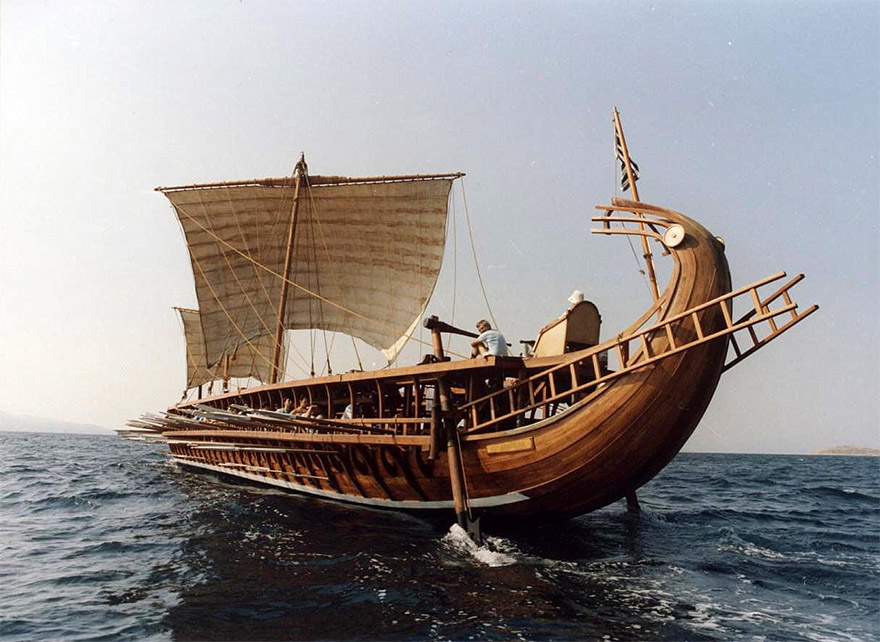
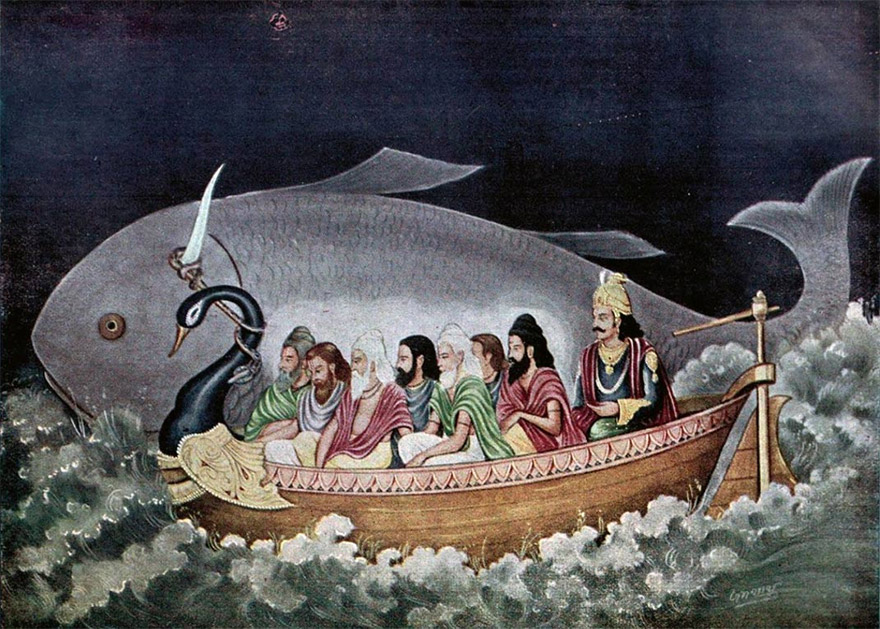
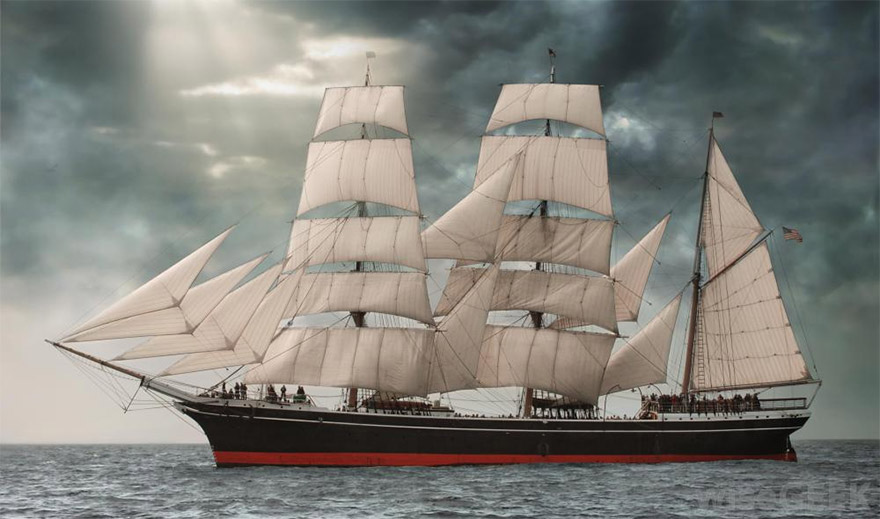
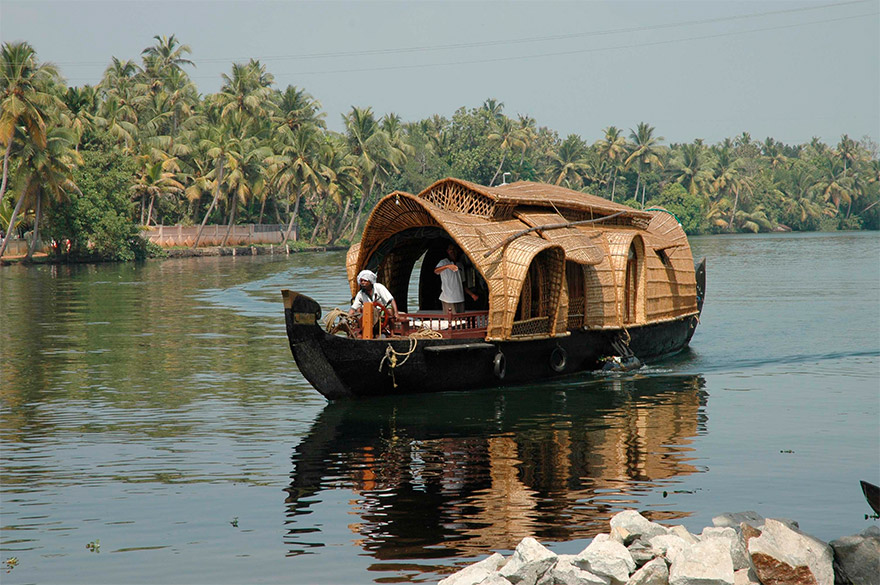
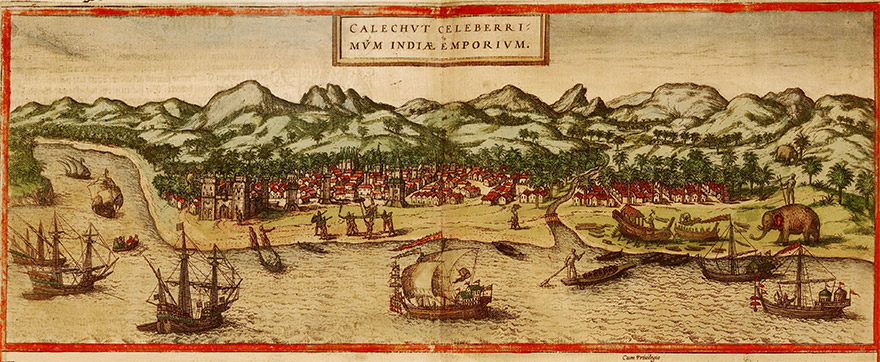
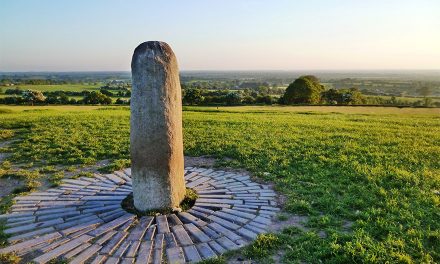

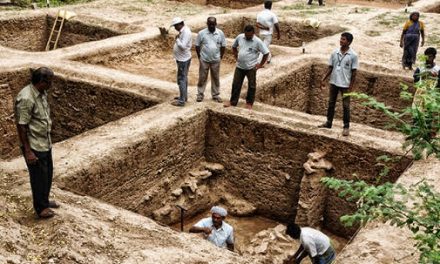
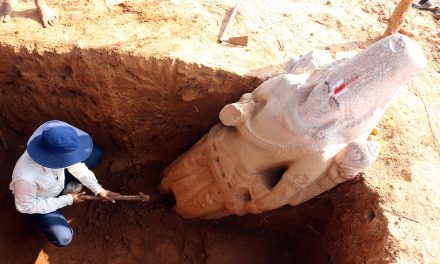









Thanks a lot. This is one of the better written articles. No bombastic claims but documented facts and testimony of foreigners themselves. Level headed writing, carries conviction.
jakarta = jayakartha
We are proud of ancient culture of India . The magnificent artefact in all field of life existed then to be made available to gain supremacy in present times. Thank you .
Excellent article.
Could you give me any information on the relationship between Ethiopia and India in ancient time?
Especially in the field of art and music.The musical instruments ,language and art exchange.
Thank you
Dr.Divya Shrivastava
There are rock deities of hanuman and Shiv in the Americas which are thousand of years old. The implication is that Vedic Indians were global travelers. Our time frame of the past has the limitation imposed by the colonial rulers as the British through media fronts as Max Mueller and Christian concept of time. Modern researchers need to come out of these limitations.
Appreciating much gor spreading this light. It has been very neatly composed, very categorical and an instrument denoting the rich culture and values of Hinduism. I will spread this far and wide, as much as i can stretch.
What I learn from the above history, and more such histories realeased by India Divine is that an enduring civilization is one that always remains humane (contacts but no domination), that always promotes individual search through various self-chosen means (based on vedic principles, or on Nyaya or Vaishesika (atheistic) or principles of piety (Shankara, Ramanuja), principles of Yoga and so on). The point is that one does not have to depend on power and ownership to progress. The only thing that brings progress in civilization (general well-being of the society, and joy in living) cooperation and freedom. Imposition of ideologies as ‘truth’ and the devious and sometimes violent methods to obtain power to do so, rank materialism and consequent self-centredness and en masse fear mongering and brain washing only ruins the mind of the humanity as a whole – which is what I think is happening now – even in India.
This is what I realise when I read your article on the ancient ships of the ancient Indians.
Even though the world refuse to admit, the knowledge of everything that exists today were originated from India..the center of knowledge
excellent article
Very interesting article, thank you.
I understand that the great messiah of Vedic thought and lifestyle in the modern West, Sri Srimad Bhaktivedanta Swami Maharaja Srila Prabhupada, said that the cultures of Greece and Rome were founded by descendents of the Pandavas.
Apparently, after Maharaja Pariksita’s time, his descendants settled Greece and Rome and were the foundation of the Greek and Roman cultures.
This information would make a very interesting article for your site, if it can be researched and verified.
So many information on Indian shipbuilding skill and human-beings of the world in general. This article makes me very sad – sadness founded on happiness. Thank you very much for this best article.
A very good read indeed. Thanks for posting the article on here.
Well researched, but lot more could have been done. The British Archives, Memoires of Vasco Da Gama, Achives and Archeological evidences in Java, Sumatra, Borneo, Bali etc could throw more light on the subject.
Excellent article,great piece of information.Unfortunately some biased ,anti Indian,anti Hindu scholars,historians,politicians have puposely ,cunningly,cleverly overlooked,undermined ancient India’s great achievements in art,literature,music,architecture,engineering,medicines,medical science,shipbuilding,sea vovages,astronomy,astrology,metallugry,minings,aircraft building,military warfare,education,economic and what not.In fact India was cradle of civilization…..